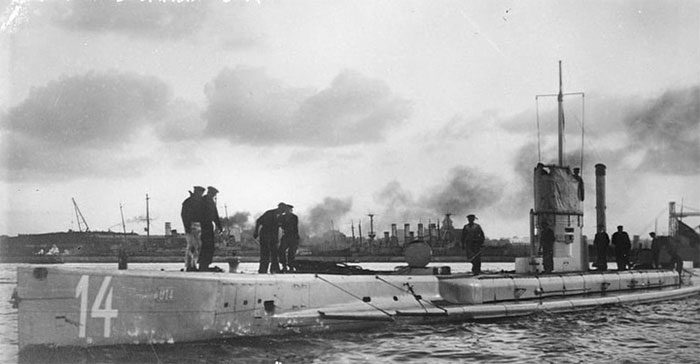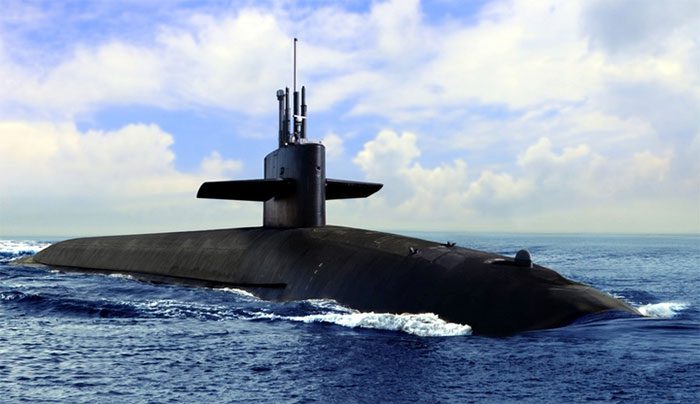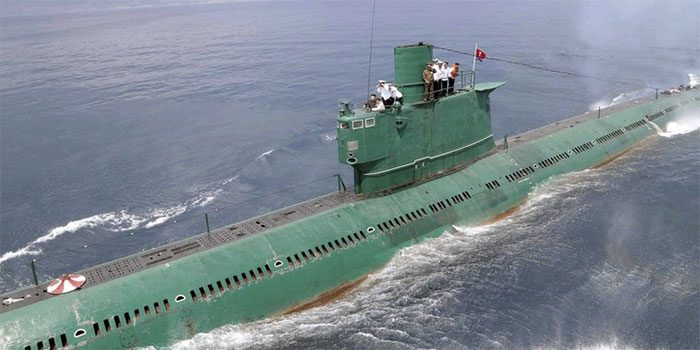You may not know: Black is not the only color of submarines.
At the beginning of World War I, the Allies, especially Britain and France, were in a state of extreme confusion due to a brand new and dangerous weapon at sea: U-boats, or submarines, of the Nazi German forces. These stealthy machines sank deep beneath the water, easily ambushing many enemy ships floating above.
When submarines were first used as a weapon at sea in the late 19th century, no one knew how to counter this new threat.
In fact, there was something referred to as “unrestricted submarine warfare” during World War I, indicating a type of maritime battlefield where submarines could attack and sink both enemy and commercial ships without prior warning.
It is not wrong to say that submarines gained an unfair advantage for a very long time.

A Nazi German U-boat
This is because the greatest strength of a submarine lies in its ability to dive and maintain a position underwater for extended periods, making it impossible for enemy ships to attack them.
<pHowever, even when a submarine surfaces, you might not see it from a distance, especially in sunlight.
Part of the reason for this lies in how submarines are painted.
Why are submarines painted black or gray?
Submarines are often painted in black tones for one main reason: camouflage.
When you stand on the deck of a warship or any conventional vessel, it is easy to spot an object on the water; powerful binoculars and telescopes can allow you to see objects up to 50 miles or more away. Additionally, all modern warships and destroyers are equipped with radar and sonar systems capable of identifying ships from great distances.
However, with a massive metal tube lying several hundred feet underwater, things are not that simple.
Submarines have only one way to see other underwater objects
Submarines have only one way to see or locate other underwater objects: sonar systems. Submarines continuously emit sound waves while moving underwater. When these sound waves hit another underwater object (such as an enemy submarine), they bounce back. The emitting submarine reads these returning signals and estimates the location of the enemy submarine.
Although there are other technologies (like GPS) that assist in this process, sonar is still regarded as the most reliable and, therefore, is the most commonly used to see and track other underwater objects from inside a submarine.
The aspect that makes submarines a terrifying weapon in naval warfare is their ability to attack and then disappear beneath the waves, avoiding enemy detection systems, torpedoes, and missiles.

Submarines are only detected by sonar systems.
Since submarines are designed to operate underwater, they do not have enough firepower to defend against attacks from above. This is why maintaining an “invisible” state when surfacing or even when moving just below the surface is crucial.
This is the main reason why submarines are painted gray or black, allowing them to blend into their surroundings; and also why submarines often surface at night, as this is a time when they are extremely difficult to detect.
Black is not the only color of submarines
While black or gray are the two most commonly used colors to paint submarines worldwide, some other countries opt for different paint colors for various reasons.
For example, the submarine below from North Korea is painted green.

A North Korean submarine.
Similarly, certain submarines from other countries, such as Iran and Israel, are also painted green, as they primarily operate in shallow, coastal, clear waters. In such conditions, the green color provides better camouflage.
Additionally, it is essential to note that not all submarines are used for military operations. Submarines can also be employed in deep-sea exploration or search and rescue missions. In these cases, camouflage is not a top priority, so submarines may come in various colors as desired.
If you plan to manufacture a submarine for reconnaissance and/or attacking enemy ships in open waters, you should consider painting the submarine black, as it acts as an enhanced protective layer for the vessel, alongside the inherent advantage of submerging at will that this massive vehicle offers.


















































